IoT Cybersecurity Vulnerabilities and Software You Can Use to Mitigate Them

The Internet of Things (IoT) is rapidly growing, connecting more devices each day, making it a huge aspect of modern cyber security trends. It is projected that by 2025, the world will have an astounding 64 billion IoT devices.
IoT expansion offers significant benefits, including connected healthcare devices, which provide people with better insight into their health than ever before, and the implementation of smart lighting, which can reduce energy consumption and lower your electric bill. However, with this increased connectivity also comes increased digital risk, as malicious hackers and cybercriminals have more entry points and exploits in cybersecurity they can utilize to instigate attacks and cloud security breaches. Web crawlers like Shodan and BinaryEdge, which are intended to aid in security research, make it easy for threat actors to identify cyber security vulnerabilities in Internet systems in order to compromise a server and introduce it to a botnet.
IoT introduces a few privacy concerns, as new Fraunhofer Institute for Communication (FKIE) research examined in this feature article reveals that your wireless router could very well be the biggest network security threat in your Linux system. These routers could be left exposed 24/7, leaving them susceptible to malware infections and other network security issues that could be the result of poor safety configurations and outdated policies.
Luckily, there are various measures that Linux users can take to secure their wireless routers and protect their systems, such as a Linux firmware replacement. This article will explore the benefits of “flashing” your wireless router with alternative open-source firmware as well as introduce some great alternative firmware and single-purpose OSes to consider.

What Are the Benefits of Open-Source Router Firmware on Data and Network Security?
Using open-source firmware instead of stock router firmware is fundamental in securing your network against malware and other exploits in cyber security. Stock router firmware is limited in functionality, generally unreliable, and susceptible to dangerous cyber security vulnerabilities. Wireless router manufacturers frequently fail to utilize security patching to take care of critical flaws in the system, leaving devices exposed and defenseless.
Conducting a firmware replacement can mitigate this risk. Alternative open-source firmware is vetted and tested by a vibrant global community to detect and eliminate network security threats like bugs and potential backdoors by implementing the latest cybersecurity trends. Open-source firmware provides exceptional security and product quality.
Flashing the firmware in your wireless router also results in superior performance, network stability, and a wider range of advanced features, including VPN integration, bandwidth monitoring, VLAN Support, and Advanced Wireless Setups. While flashing your wireless router with open-source firmware can help mitigate network security issues posed within your system, firmware replacements do not make you immune to cyber security vulnerabilities. You should still integrate as many basic practices as possible to improve security posture, such as changing default passwords and keeping on top of firmware upgrades.
Router Firmware Alternatives to Mitigate Network Security Threats
Flashing wireless routers has become an increasingly common way to improve security posture, and fortunately, there is a wide selection of open-source router firmware alternatives available for users to consider. Each firmware alternative offers similar advantages but also contains a few unique characteristics that should be looked into based on your company's needs and priorities. Here are the five greatest options:
DD-WRT
DD-WRT is the most popular Linux-based alternative open-source firmware and is well-sui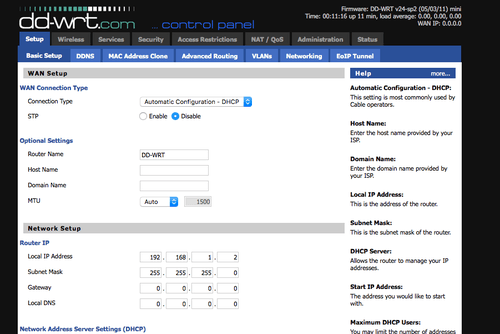 ted for a variety of wireless routers and embedded systems. The freely available firmware supports a wide range of functionality, including IPv6, DNS caching, and adblocking, and is easy to manage.
ted for a variety of wireless routers and embedded systems. The freely available firmware supports a wide range of functionality, including IPv6, DNS caching, and adblocking, and is easy to manage.
DD-WRT is a highly reliable firmware that often reduces the number of aggravating router connectivity issues that users would experience elsewhere. This is in part due to the fact that DD-WRT is a Linux-based program, and the transparency of its source code enables developers worldwide to collaborate in continually updating its code. Moreover, no corporation has the ability to modify the firmware to increase profits.
DD-WRT is also highly customizable, providing users with increased control over their router so they can use the privacy-enhancing technology and security controls as needed. Other key benefits of flashing your WLAN router with DD-WRT firmware include increased power from your router through overclocking, improved Quality of Service (QoS), more insight into your router’s performance, faster connection speeds, and better VPN support. Learn how to install DD-WRT on your router in this detailed tutorial.
What Makes DD-WRT So Great:
- Supports over 200 wireless routers and IoT devices
- Highly reliable and customizable
- Provides easy handling
- Supports all current WLAN standards
- Offers a wide range of advanced functionalities, including bandwidth management IPv6, DNS caching, and adblocking
- Improved VPN support and QoS
- Increased power from your router and faster connection speeds
Helpful Resources:
- Explore DD-WRT and look at Supported Devices
- Learn how to install DD-WRT on your router in this informative YouTube video
OpenWrt
OpenWrt is a single-purpose Linux OS that focuses on embedded devices, most commonly wireless routers. OpenWrt provides a fully writable filesystem with package management rather than static firmware and is both stable and full-featured.
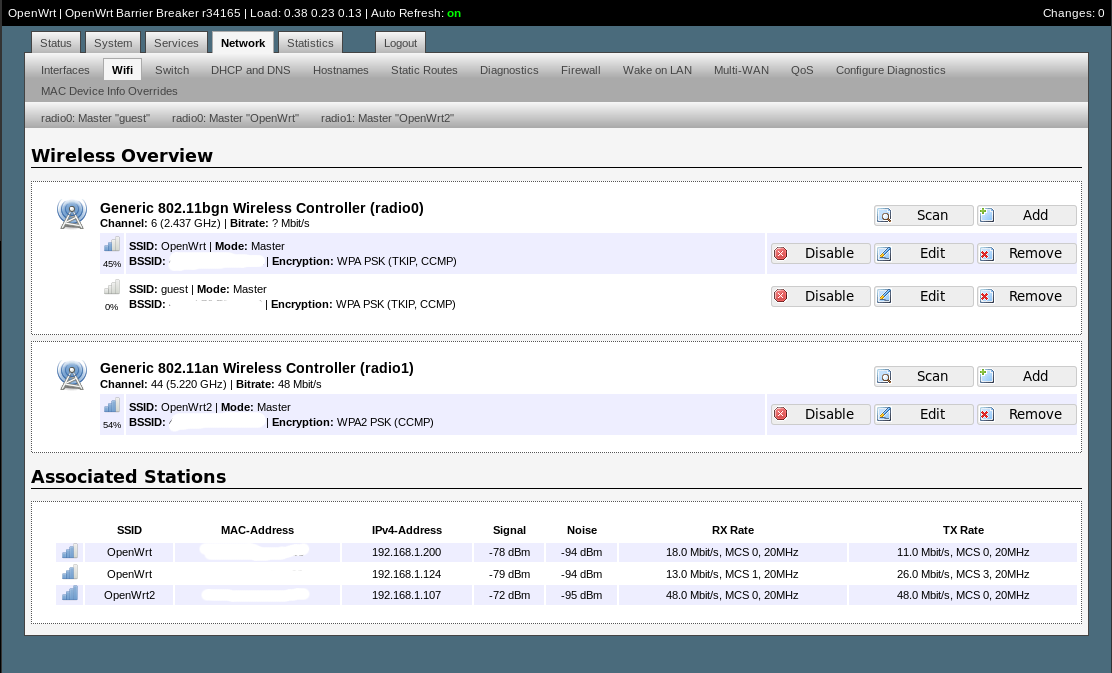
Besides the fact that it is closely monitored by the open-source community, the OS keeps software components up-to-date, a task that is often neglected in the industry, resulting in serious network security issues.
One of the most attractive features of OpenWrt is the level of customization that it offers through the use of packages. For developers, OpenWrt provides the framework to build an application without having to develop a complete firmware around it. For users, the OS makes it possible to use IoT devices in ways that they may have previously written off as unthinkable.
Another key benefit of flashing your router with OpenWrt is the ability to use its SSH server for SSH tunneling. By exposing the SSH server to the Internet, users can access it remotely and use SSH tunneling to securely access websites from public Wi-Fi. This feature also makes it possible to visit websites that can typically only be accessed in your home country while traveling abroad, demonstrating the software’s capabilities as privacy-enhancing technology.
Finally, if you’re already using a router, why not have that same router also function as a server? OpenWrt makes it possible for a router to also function as a server, whether it is a web server, an IRC server, a BitTorrent tracker, or something else.
What Makes OpenWrt So Great:
- Provides a fully writable filesystem with package management
- Offers a high level of customization through the use of packages
- Eliminates the need for application selection and configuration
- Enables developers to build applications without needing to build firmware around them
- Allows users to securely access websites over public Wi-Fi and abroad by using its SSH server for SSH tunneling
- Makes it possible to perform traffic-shaping and QoS on the packets traveling through a router, prioritizing certain types of traffic
- Offers increased stability and improved performance
Helpful Resources:
- Explore OpenWrt and look at Supported Devices
- Connect with OpenWrt on Facebook
- Learn how to install OpenWrt on an x86 router in this brief YouTube video
AdvancedTomato
AdvancedTomato is a small, lean, open-source alternative firmware for Broadcom-based routers. The firmware features a user-friendly GUI, making it ideal for users who have never flashed their router before.
As its name suggests, AdvancedTomato offers a selection of advanced features, including QoS, a new bandwidth usage monitor, a wireless distribution system (WDS), wireless client modes, and increased P2P maximum connection limits. The firmware also provides users with the ability to run custom scripts, reprogram the SES/AOSS button, and perform a wireless site survey.
What Makes AdvancedTomato So Great:
- Has a user-friendly GUI
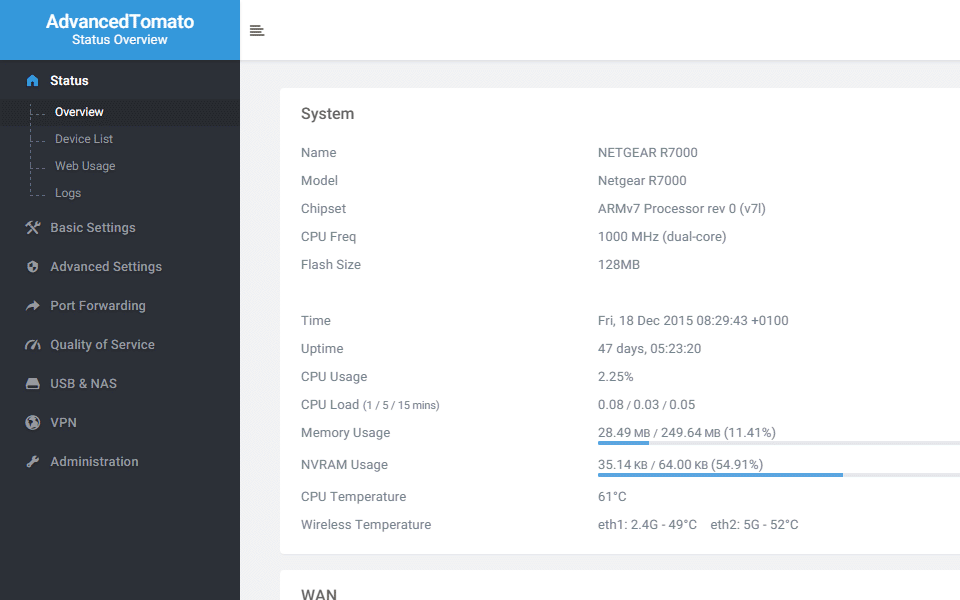
- Offers new and improved features, including a bandwidth usage monitor, WDS, and wireless client modes
- Provides advanced QoS and password access restrictions
- Increases the P2P maximum connection limit
- Gives users the ability to run custom scripts, connect via Telnet/SSH, reprogram the SES/AOSS button, and perform a wireless site survey
- Configurable buttons and LEDs
Helpful Resources:
- Explore AdvancedTomato and look at Supported Devices
- Learn how to install AdvancedTomato on your wireless router in this YouTube video.
FreshTomato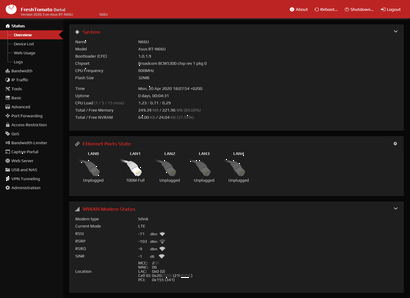
FreshTomato, a fork of the AdvancedTomato firmware, is another alternative open-source firmware for Broadcom-based routers. Like AdvancedTomato, this firmware offers a particularly user-friendly interface, making it another great option for inexperienced users.
FreshTomato is ideal for privacy-conscious users - as protecting privacy online is where the firmware truly shines. FreshTomato features a built-in OpenVPN server and client, a built-in Tor client, and a built-in Ad-block. The firmware also provides bandwidth and IPTraffic monitoring and support for a selection of wireless modes, among a plethora of other useful features. FreshTomato version 2020.5, the latest stable version, was released on July 17, 2020.
What Makes FreshTomato So Great:
- Offers built-in privacy-protecting features, including an OpenVPN server and client, a Tor client and an Ad-block
- The very user-friendly interface makes the firmware ideal for inexperienced users
- Provides IPTraffic and bandwidth monitoring
- Support for various wireless modes
- Advanced QoS is accompanied by the ability to configure labels for QoS classes
- Enabled SSH/Telnet protocols
Helpful Resources:
- Explore FreshTomato and Supported Devices
- Install FreshTomato on a Linksys E1200 router in this informative YouTube video
Gargoyle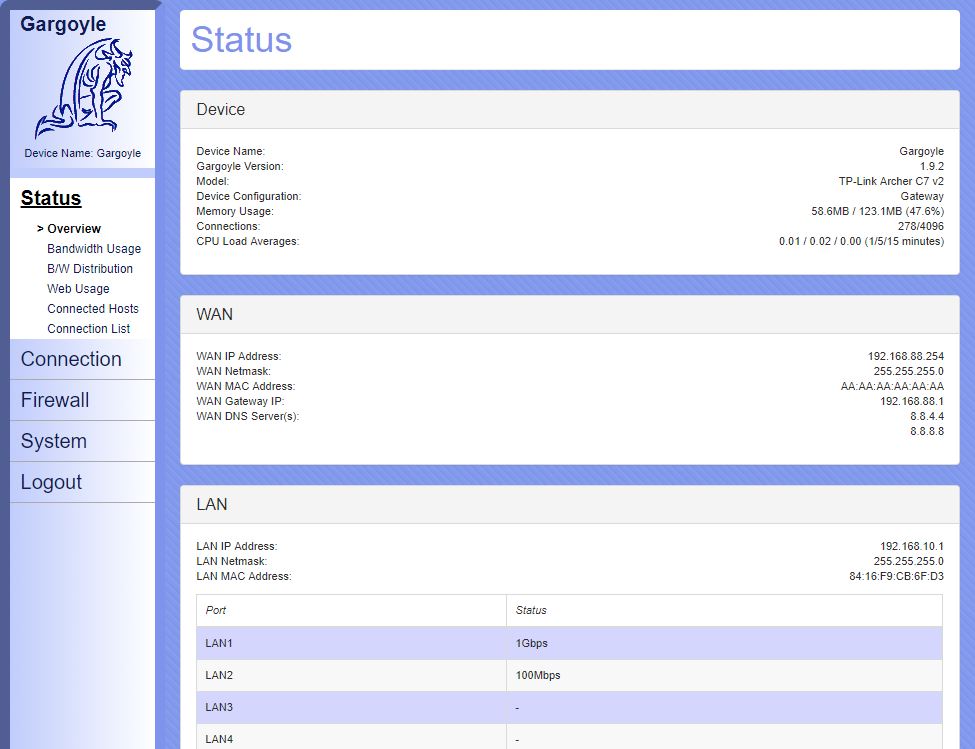
Gargoyle is a free open-source firmware upgrade for wireless routers based on the OpenWRT firmware. Like AdvancedTomato, Gargoyle is heralded for its ease of use and reliability.
Gargoyle offers a multitude of benefits, including abilities such as monitoring bandwidth usage for every computer in your system, configuring a wireless bridge that connects two networks and blocks forbidden websites, and blocking everything except for a list of allowed addresses for security-conscious users. With Gargoyle, everyone can set quotas and throttles to ensure that data and network security are maintained through all resources, which are then allocated fairly.
What Makes Gargoyle So Great:
- Reliable and easy to use
- Gives users the ability to monitor bandwidth usage for each computer in their system
- Simplifies configuring a wireless bridge between two networks
- Allows users to block forbidden websites or restrict access to only a list of allowed addresses if they wish to do so
- Quotas and throttles can be set to ensure that network resources are allocated fairly
Helpful Resources:
- Explore Gargoyle and look at Supported Devices
- Use YouTube to install Gargoyle on a TP-Link TL-WR1043ND V2 router in three minutes
Final Thoughts on Preventing Cybersecurity Vulnerabilities from Harming Your Router
Recent security research has made it clear that router manufacturers are losing interest in implementing proper security measures, which is a terrible bout of security news to swallow. It is imperative that users assume responsibility for their data and network security through the wireless users they utilize.
Dave Wreski, the founder of LinuxSecurity.com, provided some valuable insight on the topic of cybersecurity vulnerabilities, pulling knowledge from his expertise on open-source security and his experience working with wireless routers: “Engaging in general router security best practices such as keeping firmware updated, changing default passwords and doing adequate research prior to purchasing a router can help mitigate the risk that your wireless router poses to your system and protect your security and privacy online. That being said, flashing the likely-vulnerable stock firmware in your router with alternative open-source firmware is the single most effective way to secure your router against the prevalent and serious firmware vulnerabilities present in many leading wireless router brands.”





















